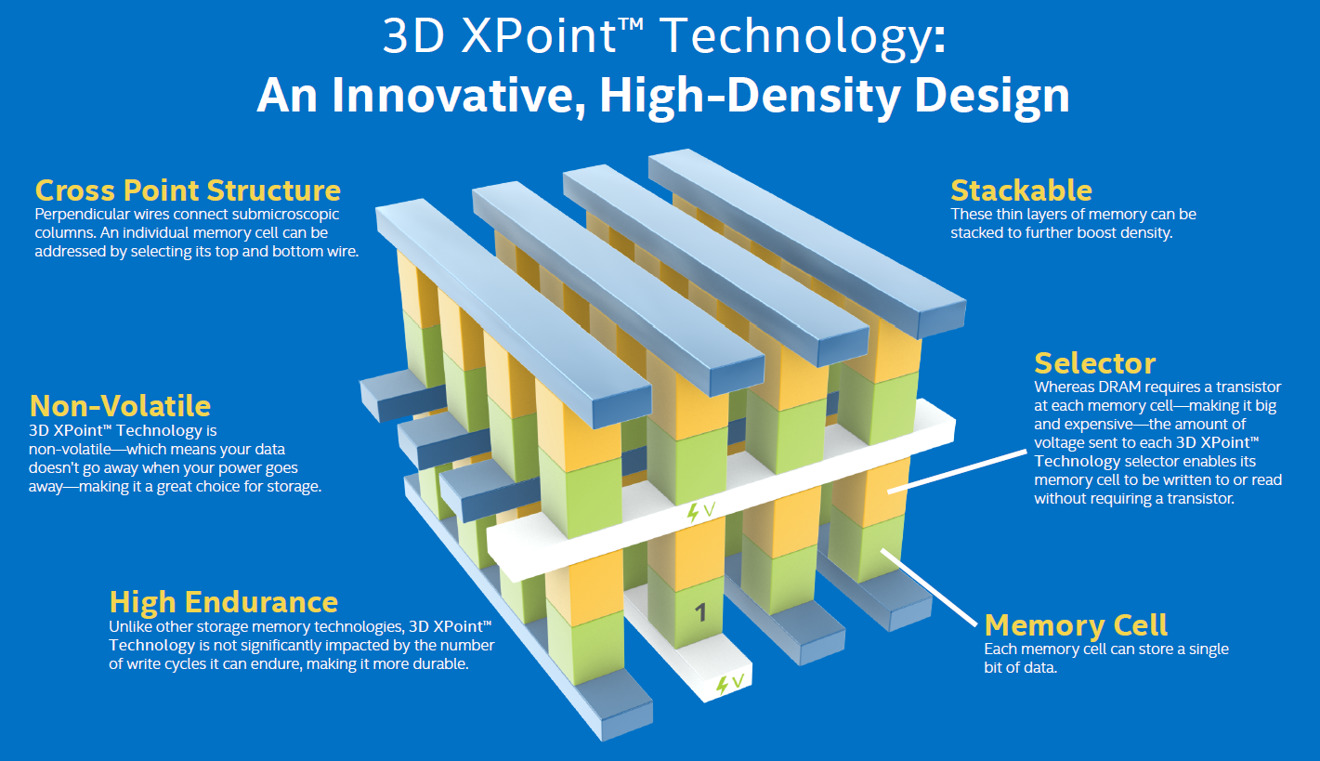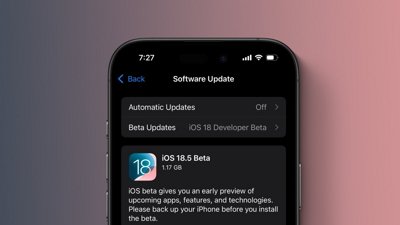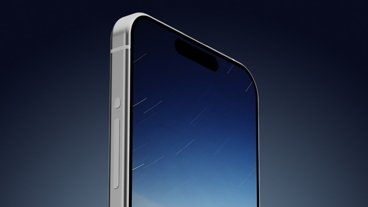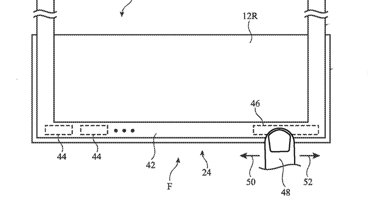Apple has set the table for inclusion of the future XPoint-based Optane SSD technology in an iteration of the MacBook Pro, potentially leading to dramatically faster access times and transfer speeds than conventional SSDs.
In the new MacBook Pros, Apple has implemented NVMe storage, across the PCIe bus. In part, this is why the Apple SSD storage in the new machines is best-in-class, with the 13-inch MacBook Pro with Function Keys are pulling down 2.2 gigabytes per second write speeds, and 3.1 gigabytes per second read speed.
Most of the rest of the industry relies on SATA-III SSD interfaces, limited to speeds around 575 megabytes per second, and is exceeded by the earlier 2015 MacBook Pro. Wider adoption of PCIe/NVMe storage for the mass market isn't expected until mid- to late-2017.
Conventional SSD media is about 100 times slower than the RAM used in the MacBook Pro, with Apple's new drives about 65 times slower. Optane storage media will be only about 8 times slower than LPDDR3 RAM.
"Apple has been a pioneer when it comes to PCIe/NVMe storage. They were the first PC company to broadly adopt it across its laptop portfolio while other companies today are still just using it in a very limited portion of their PC lineup," IDC research vice president Jeff Janukowicz told Computerworld. "By doing so, Apple has been able to deliver higher performance in terms of read/write speed and latency when compared to traditional SATA-based PC designs — thus, making the new MacBook pro more responsive and faster."
NVMe, Apple's SSD controller, and 3D XPoint
NVMe is meant to replace the older AHCI technology, which was implemented to keep systems using spinning hard drives at maximum efficiency. The newer NVMe is optimized for low-latency operations made possible by solid state media.
Even in its infancy, NVMe reduces latency by 50 percent over a drive managed by AHCI. The newer NVMe has 2.8 nanosecond latency at present, with room for future boosts, versus AHCI's absolute peak with a SSD at 6 nanoseconds.
For comparison, AHCI's latency in a magnetic hard drive is measured in milliseconds, limited by the drive itself, and not the underlying technology, and around 10,000 times slower than LPDDR3. Furthermore, conventional SSD media is about 100 times slower than the RAM used in the MacBook Pro, with Apple's new drives in the MacBook Pro about 65 times slower overall.
Optane storage media will be only about 8 times slower than LPDDR3 RAM.
The speed of the SSD in the new MacBook Pro is from more than just NVMe support. Apple's 338S00199 SSD controller is the key to the operation, allowing for throughput on a portable SSD never before seen.
The next generation of flash media storage, called 3D XPoint, and branded as Optane by Intel, is compatible with the NVMe storage protocol that Apple already uses in some of its MacBooks, including the MacBook Pro. The new technology could be used in a new MacBook Pro in 2017, controlled by either the current Apple SSD custom controller, or a future version of same as the underlying technologies are compatible now.
Intel's forthcoming "Mansion Beach" SSD line based on Optane is intended to be installed on a system's motherboard, or with a connector similar to what Apple has utilized on the new MacBook Pro, and should debut very shortly. Refreshes of the as-yet unreleased technology, and variants for data centers, are expected in mid-2017, just in time for Apple to include in a 2017 MacBook Pro.
 Mike Wuerthele
Mike Wuerthele








-m.jpg)






 Chip Loder
Chip Loder
 Wesley Hilliard
Wesley Hilliard
 Marko Zivkovic
Marko Zivkovic

 Christine McKee
Christine McKee
 Amber Neely
Amber Neely

 Malcolm Owen
Malcolm Owen








75 Comments
But, but, but, I need more than 16GB of RAM. (whining, crying baby emoticon)
Yeah, "
/sarc.
I thought the armchair engineers had determined that Apple's SSDs cost too much and the RAM was way too limited.
Shocking to imagine that Apple might actually HAVE A PLAN to move the state of the art forward.
This is why I don't engage in the suggestions Apple is 'doing it wrong' with specific hardware choices.
On a serious note, so when this mansion beach controller turns up on Intel motherboards, will Apple swap to it, or will we have Apple competing with Intel and other laptop designers on SSD read write speed with its own controller?
SSD performance is one area where the MacBook Pro is unambiguously very much a Pro computer.
One thing I'm curious about regarding Optane is whether there would be a discernible advantage to using it for virtual memory. That could be a way to make people content with the 16 GB RAM limit.